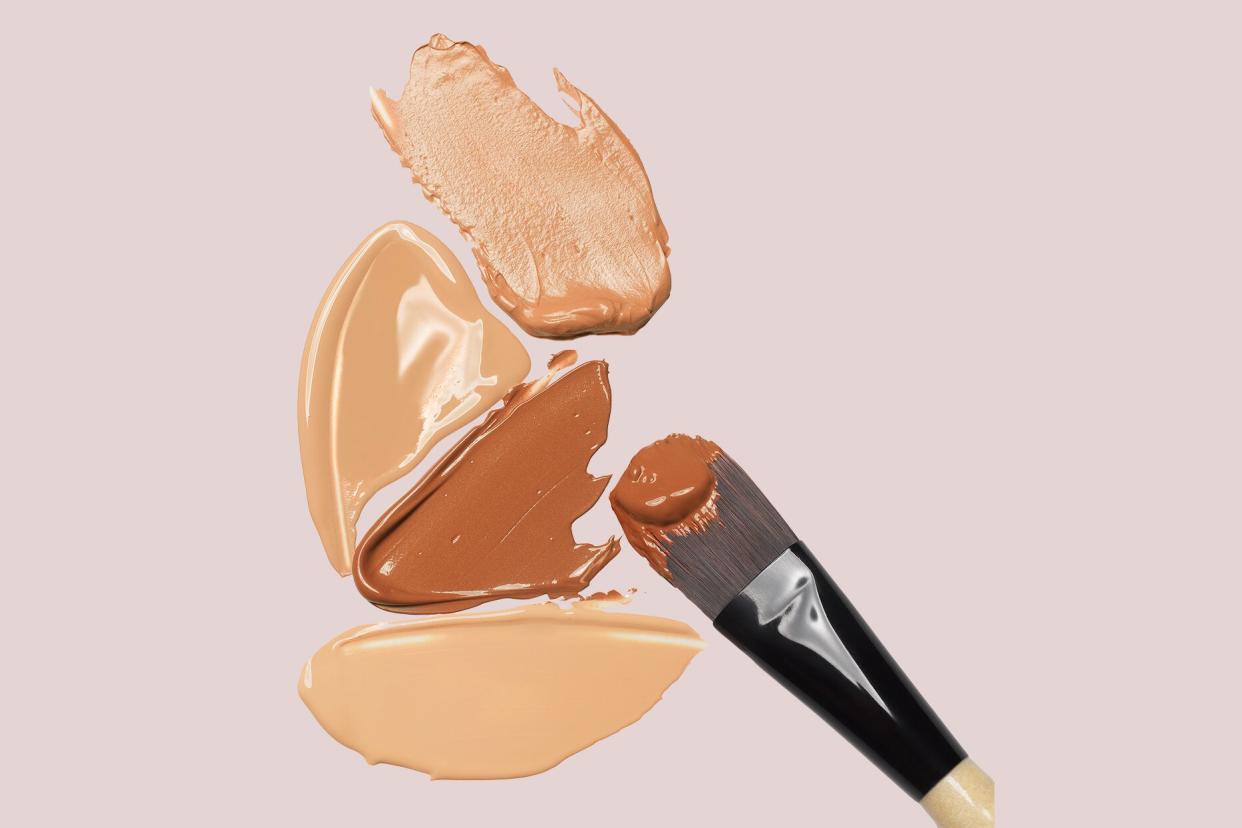Here's Why Foundation Settles Into Fine Lines—Plus, How to Prevent It from Happening to You

Getty Images
Foundation has never really been the most foolproof of makeup products. Finding the right shade to match your skin tone alone is the bane of most makeup wearer's existence. Then, even with the most flawless of applications, some formulas still settle into fine lines and wrinkles. While the cause of creasing is sometimes the foundation itself, more often than not it's the state of your skin underneath. "If you don't moisturize, your skin sucks up all the hydration in your foundation," explains Dr. Sheel Desai Solomon, a board-certified dermatologist in Raleigh-Durham, North Carolina. "The pigment is either left behind, sitting unevenly atop the skin, or drawn right into those fine lines." Here's how to get the smoothest base and what you can do to ensure your makeup stays exactly where you put it.
Related: Steps to a Flawless Face
Check the Fine Print
Mature skin has many issues ranging from creasing, dryness, discoloration, pigmentation (e.g. sun damage), sensitivity, dullness, and lack of vibrancy. "The same foundation that worked when your skin was oily in your 20s and 30s won't be a good fit for drier, more mature skin where wrinkles are a concern," says Dr.Gretchen Frieling, a Boston-based board-certified dermatopathologist. She suggests foundations that are silicone-based as they can help with smoothing the appearance of various textures and assist in longevity throughout the day. "Silicones and hydrating moisturizing properties like CC Creams are mature skin's ally, providing a diffused blur to large pores and softening the appearance of creases," Dr. Frieling explains. Look for words on the packaging that specifically do what you're looking for. For example, foundations that add luminosity give back what mature skin is deficient in.
The format also makes a difference. "Those with dry skin or mature skin should opt for liquid or cream foundations, as they don't tend to sit in fine lines or enlarged pores like powders can," says Dr. Solomon. Liquids or creams are more blendable and provide fuller coverage than their powder counterparts, too. "Liquids, in particular, have a higher degree of coverage and contain ingredients that help pigments spread more easily on the skin," Solomon adds. They also contain humectants and emollients that help hydrate and soften skin. Isododecane is a common ingredient to keep on your radar as it helps makeup stay in place, but for people with dry skin, a variety of moisturizing ingredients such as hyaluronic acid and glycerin will help skin stay plump and hydrated, which can also minimize creasing.
Focus on Skin Smoothing
Proper cleansing and exfoliation are important first steps. "If you are not cleansing properly in the morning, your makeup is sitting on top of bacteria, dead skin, oil, perspiration, and dust," says Dr. Solomon. There is also something called "product pilling," which has to do with the ability of the product to be absorbed by the skin. The less a product is absorbed, the more it balls up. Exfoliating can help to prevent this from happening. Also, check to see if your makeup (like blush or bronzer) has talc, which also contributes to pilling.
Learn to Layer
Once your skin is smooth and you've honed in on the right formula, focus on how you stack it all together. Prior to any application you should cleanse, moisturize, and prime. "Using an excessively greasy cream that sits on top of your skin might prevent your foundation from properly absorbing and drying down, which can cause it to settle into lines," says New York City-based makeup artist Andrew Sotomayor. The right cream or oil will absorb and leave skin feeling soft and smooth after a few minutes. Creams and serums with skin-plumping ingredients, like hyaluronic acid, are exactly what you want to layer under your foundation. If lines are smoothed, even if only temporarily, you'll notice a major difference in how your base stays in place throughout the day.
Don't Forget to Prime
When you want your makeup to stay exactly where you first applied it, use a primer. "Some primers, specifically those marketed for helping makeup last, work like an anti-skid mat that grabs makeup and prevents it from sliding around," says Sotomayor. Primer is the last line of defense against foundation migration. It works throughout the day to keep your makeup in place. "A smoothing primer helps fill in fine lines and other areas of uneven texture so that your foundation can't sink into them," Dr. Solomon explains. Primers forms a barrier between your skin and your makeup, locking in hydration and creating a smooth canvas for your foundation.

